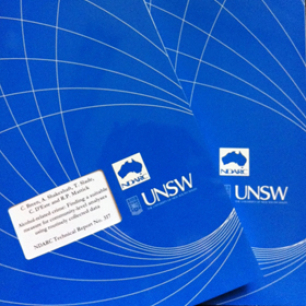NDARC Technical Report no. 305 (2009)
SUMMARY
This study represents one of the few investigations of illicit drug use issues among elite athletes, and provides a sound base from which education initiatives and policy decisions can be made.
Overall, athletes' self-reported drug use was lower than that of the Australian general population. One-third of the sample reported that they had had been offered or had the opportunity to use an illicit drug in the past year, and as the data shows, the majority of these athletes did refrain from use. Athletes' and key experts' (KE) perceptions of the extent of illicit drug use in sport were varied. Ecstasy, alcohol and cocaine were the three most nominated drugs of concern in athletes' chosen sports. KE were concerned that illicit drugs had become more acceptable in sport, and that this may lead to increased use. There was general agreement among KE that of the athletes who engage in illicit drug use, the frequency of use was low.
In general, the athletes surveyed indicated that they were knowledgeable about the effects of illicit drugs such as cannabis and ecstasy, but less knowledgeable regarding the effects of GHB and ketamine. Despite varying degrees of confidence in knowledge, there were athletes who indicated that they would like more information about the effects of drugs overall. Comments from athletes and KE suggest that education initiatives should be targeted; sport-specific; interactive; to the point; and should focus on recreational or 'party' drugs, such as cocaine and meth/amphetamine.
A large proportion of both athletes and KE endorsed testing for banned substances as an effective way of deterring drug use, and most believed that the current penalties for being caught using a banned substance were of the appropriate severity. The athletes surveyed believed that there should be separate policies regarding being caught using 'recreational' drugs and 'performance-enhancing' drugs, and that penalties for being caught using the former should be less severe than being caught using the latter.
Athletes indicated that they were aware of policies regarding drug use in sport, and sizeable proportions indicating that they wanted more information regarding these policies. KE were of the opinion that athletes were aware of these policies, though some expressed concern that knowledge was limited. Further education regarding this issue may be warranted, taking into account athletes' opinions regarding the best way to present new information.
Participants indicated that they were able to seek information about illicit drugs and that they were aware of drug information services dealing with these. Some KE believed that athletes would not know where to access information about illicit drugs and their effects. While athletes indicated that they were comfortable seeking information, there was concern that this may be seen as an indication that they were using, or intending to use, illicit drugs, and the effect this may have on team selection and their playing career. KE who were retired athletes also endorsed this view.


